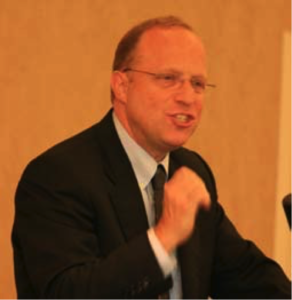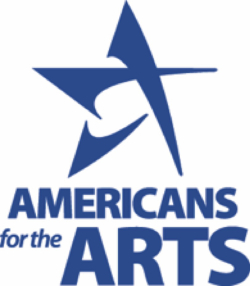 Pick up any newspaper this week and you will read about the sagging U.S. economy—recession, inflation, the sinking value of the dollar. You will also see hand-wringing articles about America’s global competitiveness and creativity—how businesses as diverse as Apple and Proctor & Gamble thrive because of it, and how we’ll lose our international market share without it. In today’s 21st century global economy, the competitive business edge belongs to innovators—those providing creative solutions that prosper in the marketplace. Leaders in business, government, and education are getting savvy to what those in the arts have long known: To fuel creativity and innovation, you need to invest in the arts.
Pick up any newspaper this week and you will read about the sagging U.S. economy—recession, inflation, the sinking value of the dollar. You will also see hand-wringing articles about America’s global competitiveness and creativity—how businesses as diverse as Apple and Proctor & Gamble thrive because of it, and how we’ll lose our international market share without it. In today’s 21st century global economy, the competitive business edge belongs to innovators—those providing creative solutions that prosper in the marketplace. Leaders in business, government, and education are getting savvy to what those in the arts have long known: To fuel creativity and innovation, you need to invest in the arts.
Creativity: Integral to Innovation
New research by business scholars demonstrates a greater understanding that creativity is at the leading edge of innovation. In the 2006 report, Are They Really Ready to Work?—prepared by The Conference Board for its Fortune 1000 business constituency—U.S. employers point to “creativity and innovation” as one of the top skills needed by new hires to succeed in the workplace. The applied skills that support innovation, such as critical thinking, communications, and problem-solving—all skills commonly acquired in a quality arts education—were, in fact, considered more important than the traditional skills of basic reading, writing, and math. These business leaders further stated that the importance of creativity and innovation would only increase in the future. Putting voice to these findings, Conference Board CEO Jonathan Spector offered the following testimony to Congress: “Innovation, creativity, and related skills such as entrepreneurship are clearly a top concern of senior executives….As innovation is crucial to competition, so is creativity integral to innovation.”
Arts: Integral to Creativity
So crucial were these findings, The Conference Board partnered with Americans for the Arts and the Americans Association of School Administrators (representing the nation’s 14,000 school superintendents) to study this issue in greater detail. Those closest to high-school graduates (public school superintendents) and those close to the workforce entrants these graduates become (employers) were surveyed to identify and compare their views surrounding creativity. The first product of this important new strategic alliance is the 2008 report, Ready to Innovate: Are Educators and Executives Aligned on the Creative Readiness of the U.S. Workforce? The study makes clear that both business and school leaders are virtually unanimous in rating creativity as increasingly important in U.S. workplaces (97 percent and 99 percent, respectively). The report, however, brings to light both provocative insights and remarkable disconnects between what business and education leaders value versus their actions.
Seventy-two percent of employers say creativity is of “primary concern” when hiring new employees. Yet, 85 percent of this group can’t find the applicants they seek. How to find such workers? Both superintendents and employers agree that an “arts degree” is among the most important indicators of creativity when hiring. School superintendents rank the arts degree study as the highest indicator of creativity. Employers rank an arts degree and self-employed work as the top two indicators of creativity, in almost identical proportions. Very few employers test for creativity in the hiring process; a noteworthy 27 percent said they use the candidate’s appearance to assess creative ability.
The Value-Action Disconnect
While it is heartening that most respondents feel a responsibility for instilling creativity in the workforce (83 percent of superintendents and 61 percent of employers), researchers found that this sense of duty is not matched by their current offerings: not in the schools, and not in the workplace. Fewer than 1 in 10 companies provide any kind of creativity training options to all their employees; in over half the companies, it is not offered at all. Students in the nation’s high schools don’t fare much better. Despite findings that the arts play a key role in developing creativity, most high schools offer arts classes on an elective basis only. Creative writing is the sole required course in more than half the districts. Less than 1 in 5 require a music class.
A Role for the Arts
In sharing these data with school superintendents, we hear genuine enthusiasm about the business community’s growing understanding of “arts-creativity-innovation” connection. Yet, they express concern that it is these same business leaders who lean on them to cut the arts in order to balance their school budgets. This effect of killing the goose laying the golden eggs is not news to most in the arts community. There are, however, bright spots that provide arts advocates a foothold to make change.
New jobs are being created, such as “Creative Workforce Director” at Big Thought, a Dallas based organization advancing arts education, or the newly created position of “Creative Economy Director” for the State of Massachusetts, as part of a statewide economic development strategy.
Massachusetts Institute of Technology (MIT) has long included arts classes among its requirements for engineering students—understanding that anyone can train an engineer, but it takes a creative one to arrive at innovative solutions and to make quantum leaps in knowledge. Americans for the Arts National Arts Policy Roundtable—a convening of 35 national leaders in business, higher education, philanthropy, and the arts—came to a similar conclusion at its Sundance Preserve convening in October 2007 when it coined the 21st century prescription to America’s economic ills: Knowledge + Creativity = A Competitive Edge.
Wisconsin’s Lieutenant Governor Barbara Lawton (a member of the 2007 Americans for the Arts National Arts Policy Roundtable) and State Superintendent Elizabeth Burmaster co-chair the newly formed Wisconsin Task Force on Arts and Creativity in Education, established to ensure that the state has the creative workforce and entrepreneurial talent necessary to compete in the new economy. “Creativity and innovation will be the cornerstone of Wisconsin competitiveness in the years ahead,” Lawton said. “We must make strategic investments now to ensure Wisconsin has the bright innovators and entrepreneurs we need to drive our state forward.”
There is overwhelming agreement among business and education leaders that creativity is an applied skill necessary to succeed in the workforce—the fuel that drives innovation. The task that remains for the arts community is to connect the dots for business, education, and community leaders to help them understand that an investment in arts education is an investment in our economic prosperity.
Improving upon the Status Quo
Musicians are essential to making change. They are our artists, teachers, and advocates. What are the first steps to doing this?
Become the “Messenger.” Give your colleagues, school administrators, community leaders the information they need to make the case at school board meetings, in curriculum planning, or talking with parents.
Get the factoids placed into your programs:
- An overwhelming 93% of Americans agree the arts are vital to providing a well-rounded education, according to the 2005 Harris Poll commissioned by Americans for the Arts.
- The arts feed the brain. The Dana Foundation findings from a three-year, coordinated, multi-university study by cognitive neuroscientists show strong links between music, dance, and drama education and cognitive development. Their findings provide evidence that children motivated in the arts develop attention skills and memory retrieval that also apply to other subject areas.
- The fact is: arts education makes a tremendous impact on the developmental growth of every child and helps “level the learning field” across socio-economic boundaries. Art also has proven to make a measurable impact on at-risk youth by deterring delinquent behavior and truancy problems while also increasing overall academic performance. In addition, arts education strengthens student problem-solving and critical-thinking skills, adding to overall academic achievement and school success.
- The nonprofit arts industry generates $166.2 billion in economic activity, and supports 5.7 million arts jobs in the U.S.
Take Action Yourself. Visit the Americans for the Arts e-advocacy center. Two minutes is all it takes to tell Congress you support the arts and art education. Add your voice to the chorus to ensure that every American has the opportunity to appreciate, value, and participate in all forms of the arts.
Randy Cohen, Vice President of Policy and Research at Americans for the Arts (AFTA), has developed the knowledge tools used to advance the arts in America since 1991. Randy produced the two benchmark economic studies of the U.S. arts industry—Creative Industries: Business & Employment in the Arts, a research and mapping study of the nation’s arts businesses using Dun & Bradstreet data; and Arts & Economic Prosperity, the most comprehensive economic impact study of nonprofit arts organizations and their audiences ever conducted. In 2006, he launched the National Arts Policy Roundtable in partnership with Robert Redford and the Sundance Preserve, a convening of national leaders who focus on issues critical to the advancement of American culture. Randy developed the Institute for Community Development and the Arts, which included working with the President’s Committee on the Arts and the Humanities to create Coming Up Taller, the White House report documenting 225 arts programs for youth-at-risk, and with the U.S. Department of Justice to produce the YouthARTS Project, the first national study to statistically document the impact of arts programs on at-risk youth. As a spokesman for Americans for the Arts, Randy has given speeches in 48 states and regularly appears in the news media—including the Wall Street Journal, The New York Times, and on CNN and NPR. Randy’s background includes working as a policy and planning specialist for the National Endowment for the Arts, founding the San Diego Theatre for Young Audiences and serving as its managing director, and working in medical research for Stanford University and Scripps Clinic. He is a board member of the Cultural & Heritage Tourism Alliance and Takoma Park Arts & Humanities Commission. Randy lives with his wife and two children in Takoma Park, Maryland.

Visit Americans for the Arts at www.americansforthearts.org or at www.artsusa.org. The nonprofit’s website is a veritable treasure chest of research, information, news, and advocacy.





